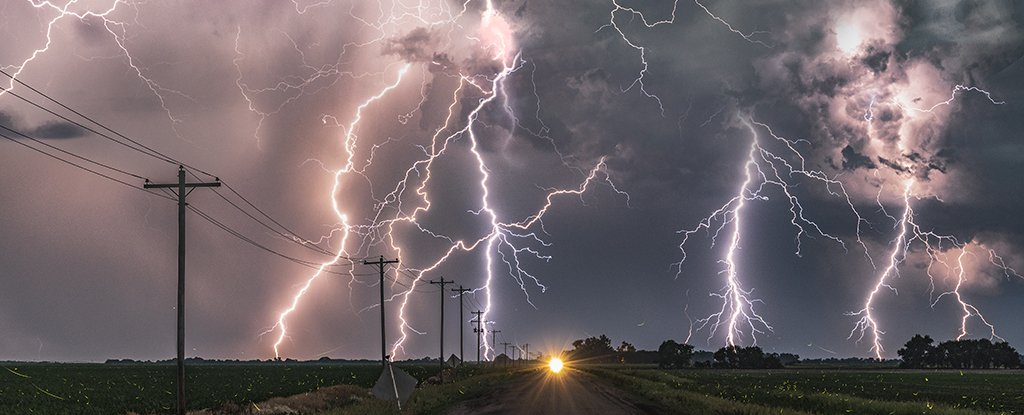Products You May Like
Lightning could be a much more important atmospheric cleanser than previously thought, according to a new analysis of historical measurements gathered from a storm-chasing airplane back in 2012 – data which were originally thought to be inaccurate.
While some of the air-scrubbing qualities of lightning bolts are already well understood – in particular the creation of nitric oxide and hydroxide that can flush out various greenhouse gases from the sky – there’s a lot more going on here, according to the new research.
It appears that both lightning bolts and the weaker, invisible electrical charges around them can produce the pollutant-catching oxidants hydroxyl (OH) and hydroperoxyl (HO2), which can also remove gases such as methane and carbon monoxide from the atmosphere.
“Initially, we looked at these huge OH and HO2 signals found in the clouds and asked, what is wrong with our instrument?” says meteorologist William Brune, from Penn State University.
“We assumed there was noise in the instrument, so we removed the huge signals from the dataset and shelved them for later study.”
These 2012 readings were taken from a NASA plane flying over Colorado and Oklahoma, measuring the anvil (or top portion) of storm clouds. The recent analysis, plus data gathered on the ground at the same time, showed that the lightning was indeed producing these high levels of oxidants.
 Classic shape of an anvil cloud. (Hussein Kefel/CC BY-SA 3.0)
Classic shape of an anvil cloud. (Hussein Kefel/CC BY-SA 3.0)
A series of lab simulations backed up the idea that both visible lightning and invisible electrical charges in the air could produce extreme amounts of the hydroxyl and hydroperoxyl radicals. However, in the air they detected little to no additional nitric oxide and ozone produced from the type of lightning you can actually see in the sky, and lab results were uncertain on these molecules too.
It’s worth bearing in mind that most lightning bolts never strike the ground, but are nevertheless setting off a multitude of chemical reactions in the clouds.
At the moment, the hydroxyl and hydroperoxyl produced by lightning isn’t included in atmospheric modeling – an omission that could be significant.
“Through history, people were only interested in lightning bolts because of what they could do on the ground,” says Brune. “Now there is increasing interest in the weaker electrical discharges in thunderstorms that lead to lightning bolts.”
There’s a lot of uncertainty in the data, the researchers admit – mostly because their data is from a small part of the world over a limited time frame – but they estimate that between 2-16 percent of global atmospheric oxidation could be caused by lightning storms.
As the planet gets warmer, thunderstorms and lightning strikes are likely to become more common, which will in turn affect the balance of greenhouse gases in the air – perhaps much more than scientists had thought up to this point.
Now that we know more about what’s happening, the next stage in the research will be to take measurements of these effects in places that aren’t Oklahoma and Colorado – and it sounds likely there’s plenty more to discover.
“Most thunderstorms are in the tropics,” says Brune. “The whole structure of high plains storms is different than those in the tropics. Clearly we need more aircraft measurements to reduce this uncertainty.”
The research has been published in Science and the Journal of Geophysical Research: Atmospheres.
